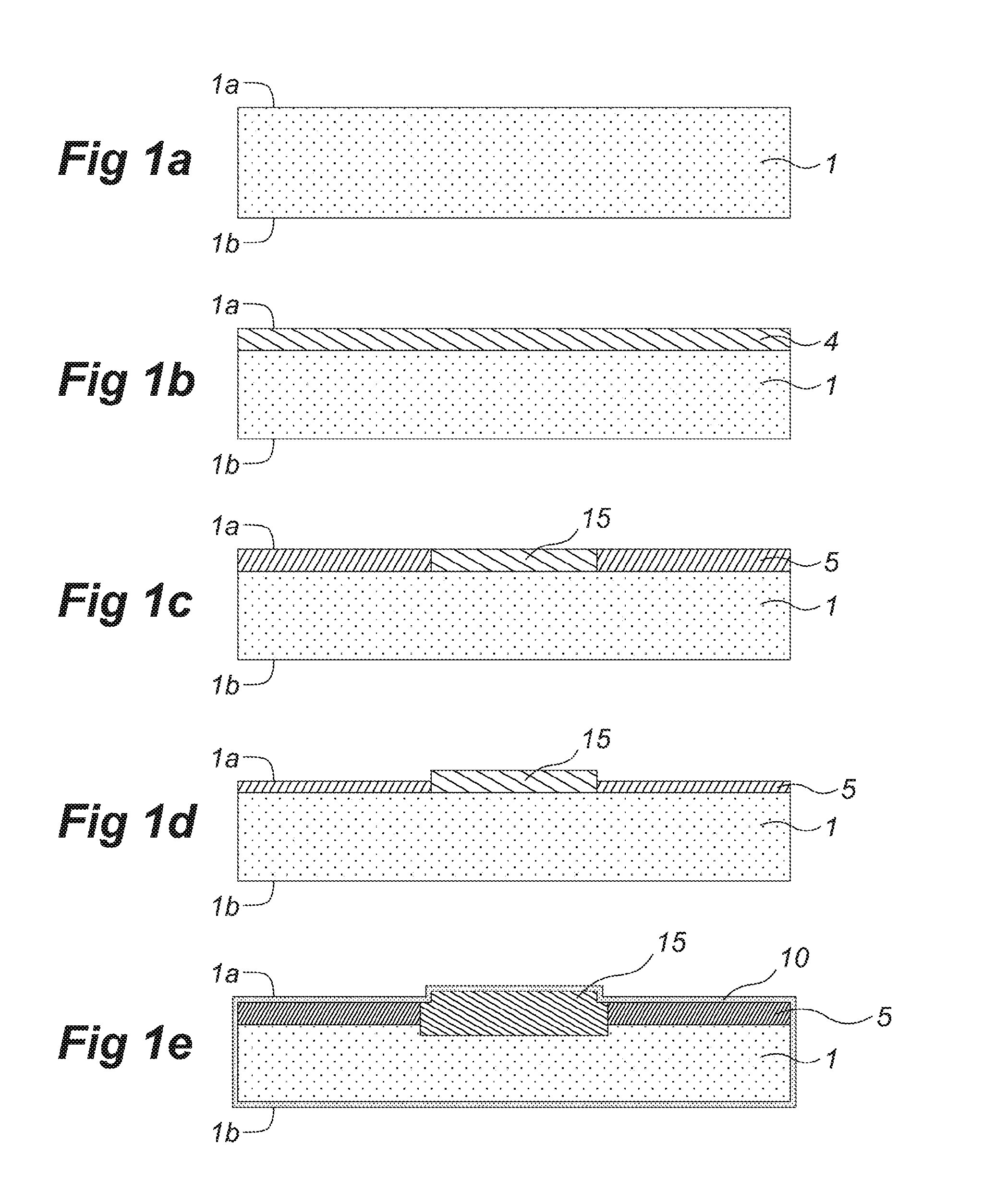Method of manufacturing a solar cell and equipment therefore
a manufacturing method and technology of solar cells, applied in photovoltaic energy generation, electrical equipment, renewable energy products, etc., can solve the problems of increasing the cost of solar cells produced, adding significant cost to machine sales price, and increasing the complexity of machines, so as to reduce the efficiency loss due to charge carrier recombination, reduce the concentration of doping, and improve the effect of efficiency
- Summary
- Abstract
- Description
- Claims
- Application Information
AI Technical Summary
Benefits of technology
Problems solved by technology
Method used
Image
Examples
Embodiment Construction
[0051]The Figures are diagrammatical in nature and not drawn to scale. The Figures are purely intended for illustrative purpose. Equal reference numerals in different Figures refer to same or similar elements.
[0052]FIG. 1a-c shows in a cross-sectional view a first embodiment of the method, resulting in a partial removal of the first subregion to a predefined depth.
[0053]FIG. 1a shows a semiconductor substrate 1 with a first side 1a and a second side 1b. The semiconductor substrate 1 is preferably a silicon substrate, such as a multicrystalline substrate or most preferably a monocrystalline silicon substrate that is doped with either n-type or p-type charge carriers as known per se to the skilled person. The semiconductor substrate suitably has a thickness of up to 200 micrometers. In the event that the semiconductor substrate is intended for the manufacture of a solar cell, the side 1a, 1b of the substrate 1 being intended for use as the front side is typically texturized in known m...
PUM
 Login to View More
Login to View More Abstract
Description
Claims
Application Information
 Login to View More
Login to View More - R&D
- Intellectual Property
- Life Sciences
- Materials
- Tech Scout
- Unparalleled Data Quality
- Higher Quality Content
- 60% Fewer Hallucinations
Browse by: Latest US Patents, China's latest patents, Technical Efficacy Thesaurus, Application Domain, Technology Topic, Popular Technical Reports.
© 2025 PatSnap. All rights reserved.Legal|Privacy policy|Modern Slavery Act Transparency Statement|Sitemap|About US| Contact US: help@patsnap.com



